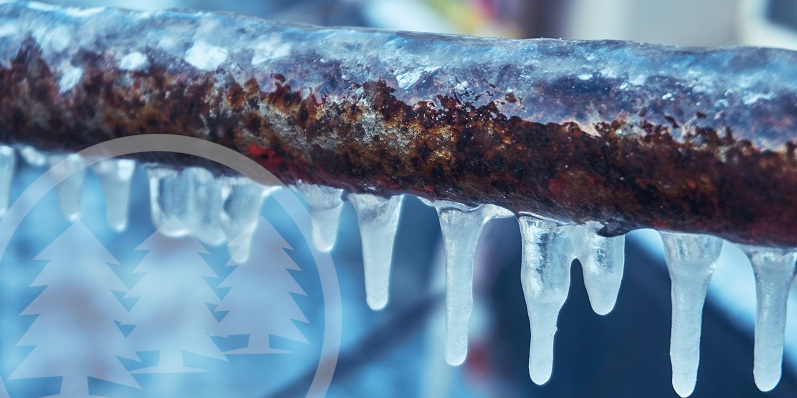A lot of damage can be sustained if you have frozen pipes in condos, houses, and other properties in your homeowners association (HOA). If you don’t want to deal with issues like burst pipes and serious flooding, you need to follow precautions to keep pipes from freezing in the winter.
In this article:
- Follow These Precautions to Keep Pipes From Freezing
-
-
- Monitor Winter Weather
- Identify Water Supply Lines
- Install Pipe Insulation Products
- Seal Cracks in Your Home
- Open Cabinet Doors
- Let Your Faucets Drip
- Maintain Temperatures at Night
- Keep the Heat On
-
- How to Check If Your Pipes Are Frozen
- What to Do If Your Pipes Are Already Frozen?
- Is the HOA Responsible for Frozen Pipes?
- Why You Need to Keep Pipes From Freezing
Follow These Precautions to Keep Pipes from Freezing
“How cold does it have to be for pipes to freeze?” and “At what temperature do pipes freeze?” are common questions asked by homeowners. Generally, when temperatures drop to 20 degrees or lower, you should start thinking about the pipes in your residence.
Modern houses in northern states (where freezing weather is common) have protective features, such as added insulation and better placement of pipes. This is not usually the case in southern states, partly because cold spells are rare. Condos, houses, and other residences may not be insulated against frigid temperatures and water pipes might be placed outdoors or in other unprotected areas.
Freezing temperatures and extreme weather conditions still happen though. As a homeowner, it’s important that you know how to keep pipes from freezing. Following precautions that prevent frozen pipes can save you a lot of time and money later on if you have to deal with serious issues such as burst pipes and flooding.
Here’s what you can do to prevent pipes from bursting this winter:
1. Monitor Winter Weather
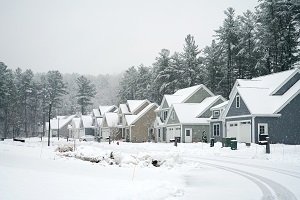 The best way to prepare for freezing temperatures is to monitor the weather during winter. You’ll have advanced notice in case there is a potential cold spell. Since temperatures usually drop at night, there will be enough time to prepare your pipes and prevent them from freezing.
The best way to prepare for freezing temperatures is to monitor the weather during winter. You’ll have advanced notice in case there is a potential cold spell. Since temperatures usually drop at night, there will be enough time to prepare your pipes and prevent them from freezing.
2. Identify Water Supply Lines
Homeowners should know where their water supply lines are located. If you know their location, you’ll be able to check on them during the winter. Confirm if they are inside or outside your house. Are they already insulated? Your answers will determine if you need to take additional precautions to keep pipes from freezing in the winter.
3. Install Pipe Insulation Products
Protect your exposed water pipes by installing insulation products. They supply heat to your pipes and keep them warm in freezing temperatures. There are many options to choose from such as a pipe sleeve, foam, rubber, or fiberglass insulation, heating tape, and heating cable.
It’s best to install these products before winter so that your house and pipes are well-protected. Place them in specific pipe sections where you know there is a higher risk of freezing. If you’re caught in a pinch, there are temporary solutions such as wrapping newspaper around pipes and placing a tarp over your exposed pipes.
4. Seal Cracks in Your Home
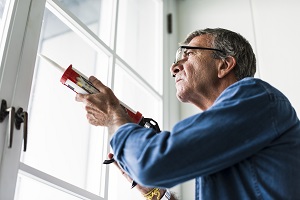 Even if you keep your doors and windows closed, cracks and holes in your home will still let cold air in. This can make your pipes colder and more prone to freezing. In some cases, the cracks might even be found where water pipes enter your home. To keep pipes from freezing, seal all the cracks and holes in your house’s foundation. You can use caulk or spray foam insulation.
Even if you keep your doors and windows closed, cracks and holes in your home will still let cold air in. This can make your pipes colder and more prone to freezing. In some cases, the cracks might even be found where water pipes enter your home. To keep pipes from freezing, seal all the cracks and holes in your house’s foundation. You can use caulk or spray foam insulation.
5. Open Cabinet Doors
Water pipes are often located inside the kitchen and bathroom cabinets. If you are expecting freezing temperatures, open the cabinet doors. The heat from your house will be able to circulate and reach your pipes. This will keep your pipes warm and lessen the risk of frozen pipes.
6. Let Your Faucets Drip
Let faucets in your home drip during extremely cold weather. Having running water — even just trickle — can help keep your pipes warm. Freezing temperatures cause pressure to build up inside water pipes, causing them to burst. Dripping water relieves this pressure and helps keep pipes from freezing. Make sure to drip both hot and cold water. If you have single faucets, open it to warm.
7. Maintain Temperatures at Night
Some homeowners have a tendency to turn down the heat at night. If the temperature suddenly drops while you are sleeping, your pipes will not be protected and could become frozen overnight. As a precaution, maintain the same thermostat level during the day and night.
8. Keep the Heat On
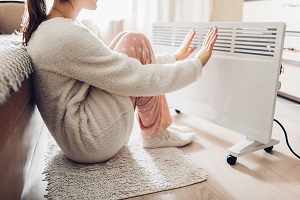 Homeowners who leave their homes during cold weather are advised to keep their heat on. The ideal temperature would be around 55 to 60 degrees. This will be warm enough to keep pipes from freezing.
Homeowners who leave their homes during cold weather are advised to keep their heat on. The ideal temperature would be around 55 to 60 degrees. This will be warm enough to keep pipes from freezing.
This might seem too much for some homeowners due to the added costs in their expenses. However, a higher utility bill will still be cheaper compared to what you will spend if your pipes freeze and burst. If your house floods while you are away, you will have to deal with significant damage to your property and belongings.
How to Check If Your Pipes Are Frozen
After a cold night, you will want to check your pipes if they are frozen. Here’s what you need to do:
1. Turn on a faucet — preferably the kitchen sink or something that drains very well. Open it lightly. You don’t need to have it on full blast.
2. Allow the pipes to thaw and wait for the water to return.
3. Once the water has returned, run all other faucets and check for potential leaks.
If you open a faucet and water is only trickling out, you may have frozen pipes.
What to Do If Your Pipes Are Already Frozen?
You can follow these steps to recover frozen pipes:
1. Keep the faucet open. Running water will help thaw out frozen pipes.
2. Apply heat to frozen pipes. You can use a heating pad, hairdryer, or even warm towels. Use them to thaw out frozen pipes. Do not use open-flame devices such as blowtorches, stoves, or propane heaters. Thawing frozen pipes using open-flame devices is dangerous as they are a serious fire hazard.
3. If the aforementioned steps do not work, or your pipes are not easily accessible, you may need to call a plumber.
Is the HOA Responsible for Frozen Pipes?
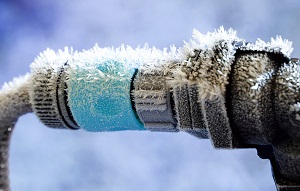 Homeowners are responsible for repairing interior leaks and any other damage caused by frozen pipes in their homes. If you live in a condo, some of the exterior pipes might be covered by the HOA. In this case, condo residents can make a service request and the HOA will send someone to look at the pipes.
Homeowners are responsible for repairing interior leaks and any other damage caused by frozen pipes in their homes. If you live in a condo, some of the exterior pipes might be covered by the HOA. In this case, condo residents can make a service request and the HOA will send someone to look at the pipes.
The HOA can still help homeowners minimize the risks that come with freezing temperatures. The board can alert residents whenever extremely cold weather is expected. The HOA can issue reminders and tips on how to keep pipes from freezing. Homeowners should also alert the association if they have leaks and other damage caused by frozen pipes.
An HOA management company can provide assistance during this time. For example, an HOA manager can refer homeowners to trusted plumbers who can repair pipes in your home. The management company can also take charge if shared spaces such as the clubhouse or gym experience frozen pipes.
Why You Need to Keep Pipes from Freezing
Even southern states can experience freezing temperatures. If you’re a homeowner, it’s important to know what to do to keep pipes from freezing. Following safety precautions can prevent frozen pipes or at least minimize the damage to your property.
While there may be added costs on your end, keep in mind that there will be more expenses if you have to deal with burst pipes and flooding in your home. Aside from tips on how to keep pipes from freezing, you also learned what to do in case you still end up with frozen pipes. If you need further assistance, don’t hesitate to contact your HOA management.




